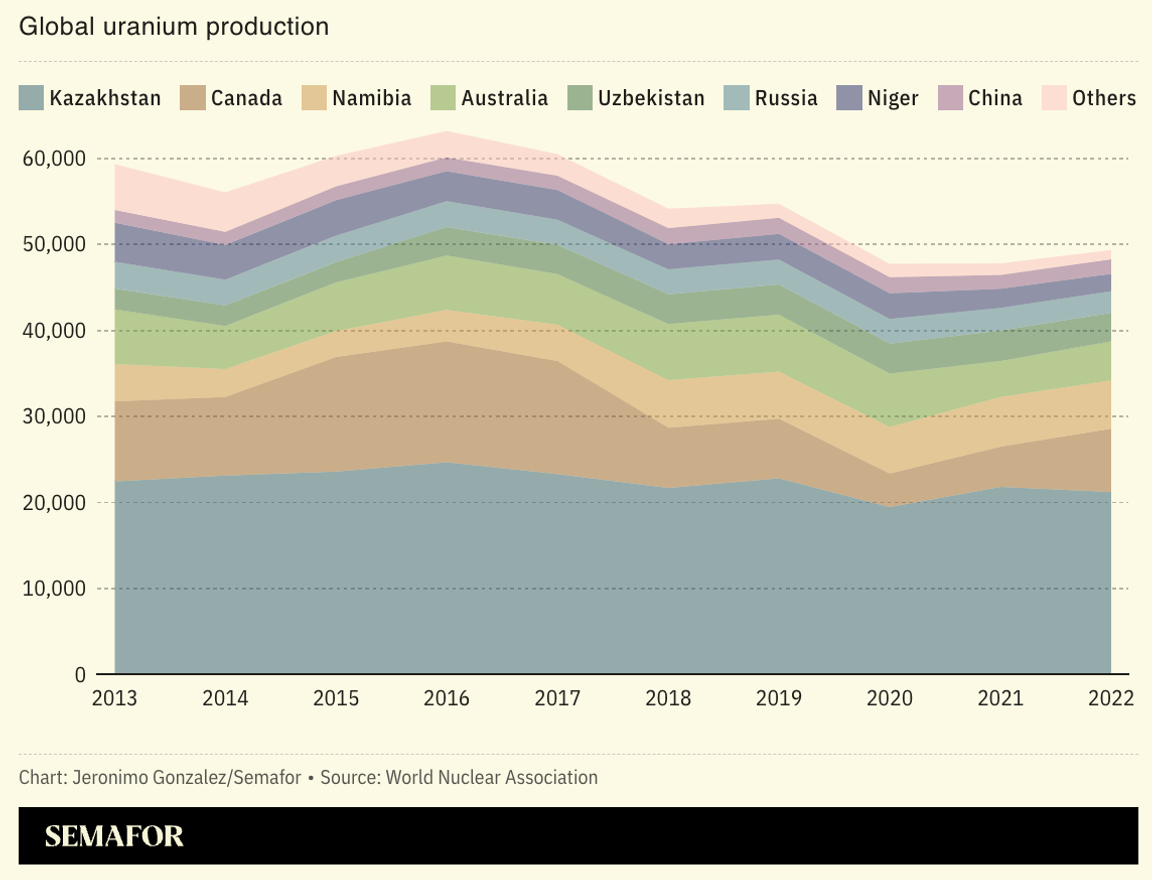 Western countries that are upping their bets on nuclear power as they look to slash carbon emissions while maintaining baseload electricity are ill prepared for a brewing supply shock, a major uranium miner warned. Monica Kras, vice president for corporate development at Canada’s NexGen Energy, echoed warnings from Kazakhstan’s Kazatomprom and Canada’s Cameco that future supplies of uranium are likely to fall short of demand, with the Kazakh firm — the world’s biggest uranium producer — projecting a deficit of 21 million pounds in 2030 and 147 million pounds by 2040. “We think we’re going to be in a supply deficit for the foreseeable future,” Kras said in an interview. NexGen plans to have its Rook 1 mine in the Canadian province of Saskatchewan — the largest uranium project under development in the country — up and running in the coming years and estimates annual production of about 21 million pounds. Yet with demand increasing as countries seek to build new nuclear power plants, extend the lives of ones currently operating, and bring others out of retirement, that is unlikely to fill the gap. “We weren’t expecting this massive demand inflection,” Kras said. And, Kras warned, uranium prices increasing — currently at about $91 a pound, up from the $55 range in September — won’t sufficiently incentivize additional mining to fill the gap. By her reckoning, miners need 10-15 years between making a discovery and actually producing uranium. “The supply deficit is not understood enough,” Kras said. Utilities in particular “think, the more they pay, they’ll get that response of supply.” |